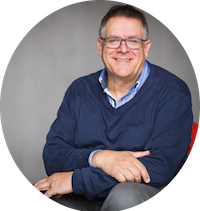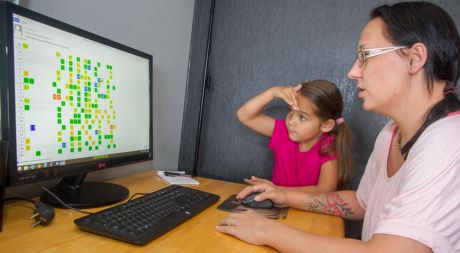NIEUWSBERICHT
FSL data no longer via Diasend to diabetes team
Your data? My data! ? A divorce and a data war?
 Dr. Henk-Jan Aanstoot, kinderarts Diabeter
Dr. Henk-Jan Aanstoot, kinderarts Diabeter
I was thinking about a popular song where someone describes the problems of a couple that splits up and starts discussing and negotiating who owns what (Acda and De Munnik) as I read the message that we got from Diasend just before Christmas (December 23, 2019).
Abbott and Diasend no longer support data-uploads of the FreeStyle Libre (FSL, the Flash Glucose Meter) through Diasend's simple upload connection.. Intriguing, as just last December our national healthcare agency ZIN (Zorginstituut Nederland; the ‘Dutch NICE’ office), approved extended reimbursement for basically all patients using MDI (both T1D and T2D) in our country at the price of more than € 100 million. This decision of keeping the data only in the Abbott silo, hinders any next step required to evaluate, extend and simplify diabetes care, digital eHealth and its further development. As in the song, this decision feels like a divorce. A divorce is always a hassle and the children are often the victims. With the difference then that here the patient is likely to be the loser in the end.
It is not yet clear to us who started ‘the argument’, but it has important implications for the future diabetes care. It blocks the availability of glucose- and other data to be used in other applications than the one that a company developed. We believe that such data belong to the patient and should always be available with full transparency and without any restrictions to the patient and healthcare team (when approved by patients). This allows proper coaching, training, evaluation, use in other applications and storage in the patient’s own Electronic Medical Records (EMR). As we were using this in our own e-Health systems and algorithms, thereby delivering the patients advice and care, we think it was not ethical nor appropriate to turn-off this possibility at such a short notice and without proper warning, alternatives and explanations (Abbott only came with a message on 17 January, just 3 days before their dataflow through Diasend was cut off).
Stop in dataflow from FSL through Diasend
Until the 20th of January 2020, users of an FSL could sent the core glucose data of their device to their HCP, through a simple application in Diasend. While patients can see their data in another app from Abbott (and HCP’s can be ‘allowed’ to watch it too), the possibility to send the data to their HCP’s is of paramount importance for several reasons:
1. Use in training, education and evaluation of the FSL in each patient (This is a prerequisite for the reimbursement!)
2. Use in personalized advice in dosing, adjustments and specific activities (sports, sick-days, etc.)
3. Use in sophisticated analyses and algorithms being available and under development to improve further outcomes and apply eHealth s a new way of care delivery rather than an add-on to existing care. Although we appreciate some aspects of the App’s of the industries, the data remain in their silo and hamper additional and future use.
Further availability should help to improve care, which is strongly needed as (in the Netherlands and abroad), roughly only 30% of T1D patients achieve the goals of (international) guidelines, which lead to a safe and complication-free future. Thus, two-thirds of patients are still in danger (despite many improvements in care in the last decades) of developing severe and costly complications. The availability of new technology such as FSL can help to minimize these risks, but also require adjustments in care.
‘You can see a lot by watching’
New technology allows for new ways of healthcare. In diabetes sensor technology allowed us to look differently at glucose management: not solely at HbA1c anymore (still more a ‘compass’-value showing if we are on the right course), but on additional parameters explain glucose-variability. This allows to detail the care and adjust towards normal values.
Industries created device-specific apps for this that run on smartphones. Users (i.e. patients) must create accounts in the companies’ silos which allows them to look at millions of datasets (worldwide more than a million people use FSL, for example) and putting them in the position to have (part of) the patient’s health record. They can monitor the use and issues related to their device. Fine, and protected (in most countries) by GDPR and additional privacy laws, but not intended to be just ‘their’ data in ‘their silo’.
HCP needs data for best care
We, HCP’s, also need these data in its ‘crude’ form (and not just in a company’s summary sheets in the ‘personal app’ of the patient) to be used in your clinic, to be used in our eHealth, to be used in our advice and to be stored in your health record with the clinic /doctor who is responsible for your care. And clinical data are kept under different laws than company data, explaining for example who is really allowed to look in your data and use them.
As explained, we use these data in our personal advice, in dose-adjustments, in personalized advice for sports, sick-days etc. This is not (and should not!) be part of the companies’ apps and data presentations. They belong to our patient-HCP agreement on care. Diasend provided a unique platform where these data could be retrieved and collected from most diabetes-devices such as glucose meters, pumps, end glucose sensors. However, unfortunately this ended 20th of January for FSL
‘Hey doc... look at my App’
You might say that you allow your doctor to look into your data in the company’s app. Just ‘tick-box’ the approval for the diabetes team, and voila… no issue?
Nope, we still miss the data in your file, we can’t use the data for further analyses, improvements and advice such as Diabeter’s ‘Ther@pymail’ app. Only combining your glucose data with your other important data such as weight, total insulin use, basal insulin requirement and more, can give the best personal device and best care. Watching in your app is not more than looking at a letter in pdf format: frozen data not easily accessible for further use. And forget about using them for research….
Diasend
Diasend was developed by a Swedish company to allow patients and clinicians to exchange data on diabetes and covered most devices. The Swedish government understood the important of data-exchange and supported its use. Also, now Diasend’s possibility to exchange FSL data is still possible as the Swedish healthcare authorities insisted on this possibility as part of their contract with Abbott on the FSL delivery in Sweden.
Data-exchange is something between the patient and the doctor (HCP). It has to be available in a transparent way. In this view, the company delivering devices is not a part of the diabetes team. Worldwide use of Diasend includes 2 million people with diabetes and 9000 clinics in 32 countries are connected. The decision by Abbott/Diasend to stop it for the FSL makes care not better.
Diasend offered a quick and safe way to upload and exchange glucose- and other data. Previous to a contact between patient and HCP (whatever kind of contact: visit, phone, mail, e-health etc.) the data were in the patient’s health record. This improved the quality and effectiveness of each consultation and opened possibilities for remote care and more.
‘I will ‘automate’ your job away…’
We realize that this method is not yet used everywhere, but it will be needed to improve diabetes care in times where availability of HCP’s is limited, rising healthcare costs (of which 60-70% are human resources) require changing structures and patients can do more and more themselves and need coaching rather than traditional care. ‘My automation of diabetes care will make your job’s largely obsolete’, told a researcher on closed-loop, automated pancreas systems to an audience of doctors and diabetes nurses (Robin Koops, Inreda). This is most likely the case in the future, but until automated glucose regulation is there (and even beyond that point) we need to care for our patients which includes having the data.
‘A cable network for a while’
Diasend explains in its ‘divorce’ letter’ that people can use the handheld of the FSL and link it through a cable to send data through a LibreLink app. However, most patients use their smartphone as device and won’t easily switch to a second device. And, this possibility will end in the near future.
In Abbott’s letter it is clearly stated that there will be no way for automated uploading to HCP’s and it advises HCP’s to use the patients Libreview ‘guest-account-like’ possibility. As indicated, this has strong limitations for full modern and remote diabetes care and creates a separate silo of data.
For us it remained incomprehensible that automation and improvement of diabetes care is set back in time, rather than getting ready for the future. It is even more strange that this happens without proper notification, a decent interim period and time to look for alternatives. We have 800 patients in Diabeter transitioning now to FSL and we can’t deliver them the care we used to give…..
‘The war on data’? Whose data is it….
Data-ownership, use and -exchange become a hot topic in healthcare as seen with this FSL development. EULA’s , AVG/GDPR seem to ‘frame’ the ownership in ways we do not really need in healthcare. For sure, safety is important: are algorithms used to adjust insulin safe? Can someone hack my pump? Are data in industry-silo’s safe and who owns them? If I want those data to be sent to my HCP, do we get another bill (we paid already for the device and the data…)? New questions for new situations in healthcare.
And now?
The diabetes team and in our laws the doctor, has the final responsibility for the healthcare and outcome of patients. This is why we feel that the data belongs to the patient and should be available whenever the patient wants that. This is in line with EU directives on primary and secondary use of data. Such data can never become fully owned by another party such as a company and remain owned by the patient.
The Dutch Ministry of Health carries this in many documents and statements: ’accessibility to actual and relevant data is of primary importance’ and it explores ‘how these data remain accessible for personalized modern healthcare’. It searches for ways to make sharing of data an obligatory part (as in Sweden and Norway in the case of FSL!)
So, time to get to solutions! We try to keep in touch with the ‘separating couple’, but feel that legal issues are developing and getting in the way of simplicity. In addition, we explore other possibilities to solve the data-issue for our over 800 FSL users. Whatever solution, it requires time and money. Money and time that we could have spent on other things that would immediately improve the outcomes of our patients.


